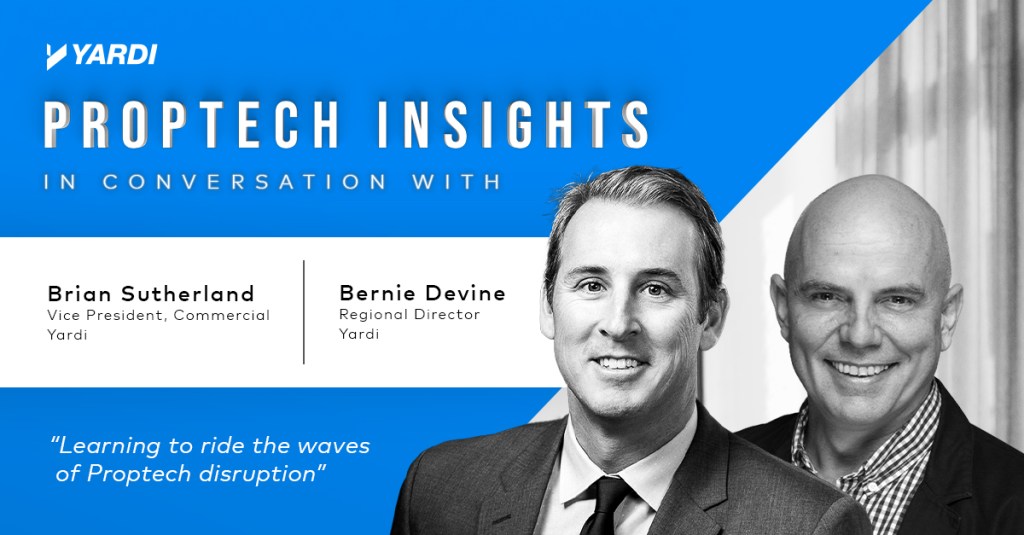By Yardi Blog Staff on December 11, 2021 in Global
The real estate sector is busy repositioning portfolios, pivoting into new sectors and pouring money into proptech. But will it be enough to meet the elevated demands of building customers in the post-pandemic world?
This was the big question behind Bernie Devine’s latest Yardi Proptech Insights webinar.
In the fifth instalment of the series for 2021, Brian Sutherland, vice president, commercial at Yardi joined Devine, regional director, APAC, for a chat.
Sutherland started his own e-commerce company at age 16 and today is responsible for leading commercial sales and marketing for Yardi across the United States. Sutherland is passionate about the power of technology to enhance engagement and bring asset owners closer to their customers, and his insights were fascinating.

Office landlords have enjoyed a clear advantage during the Covid-19 era, Devine and Sutherland agreed. Long leases have given them the luxury of time to consider the future carefully.
Tenants are on a “flight to quality,” want shorter and more flexible leases, and are scrutinising sustainability attributes of space, they noted.
In response, building owners are amenitising their assets, Sutherland said, to create spaces that facilitate “culture, coaching and collaboration”. This presents new revenue streams, and Devine pointed to a clear trendline towards non-rental revenue growth. “But more services mean more business processes and more complexity.”
Office landlords can learn much from the retail sector, which had already faced a tidal wave of disruption from the e-commerce titans, and which had reacted and repositioned assets before Covid-19 hit. In some cases, the pandemic’s reclassification of retail as an essential service had been an advantage, Sutherland said.
Some malls continue to struggle, but others are adapting rapidly to the new normal and transforming empty space into distribution hubs and last-mile delivery centres. Sutherland mentioned the local Urban Outfitters store in Santa Barbara, Calif. (where Yardi is headquartered) which now has staff members packing boxes in store – “something we haven’t seen before” but is necessary as competition with Amazon heats up.
Retail is often set up for dispatch and delivery and “retasking spaces” for last mile distribution made perfect sense, Devine added. But, again, this repositioning and retasking adds complexity.
A new philosophy – one that prioritises user experience – was emerging, Devine observed. “I often like to say a building is a device.” But seeing a building as a device requires mobile-led solutions.
A flood of money is streaming into tenant experience apps. HQO raised $60 million in funding in April, while VTS acquired workplace experience platform Lane for $200 million in October. These are just two examples. There is a lot of curiosity from landlords about how apps can make their assets perform better. “Are they going to be able to produce more yield of have a better experience in their properties?”
Yardi’s team is thinking hard about this question. Yardi’s tenant app, which currently has 75-plus active asset owners, is currently being expanded to address how employees, vendors and even visitors connect with the app when they enter a building.
What does the future look like? Sutherland believes the office’s outlook is bright, but he can’t see “expectations around the experience within a building” abating. That requires a far greater investment in technology – and in “platforms to support and facilitate a positive experience with the physical environment.”
Now is the time for landlords to listen to their customers and “to really push new ideas within their properties,” he concluded.


